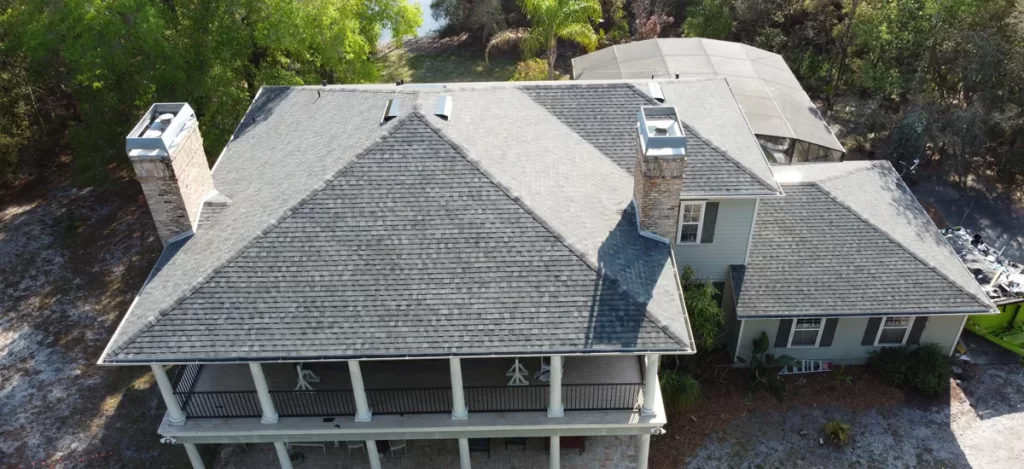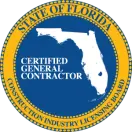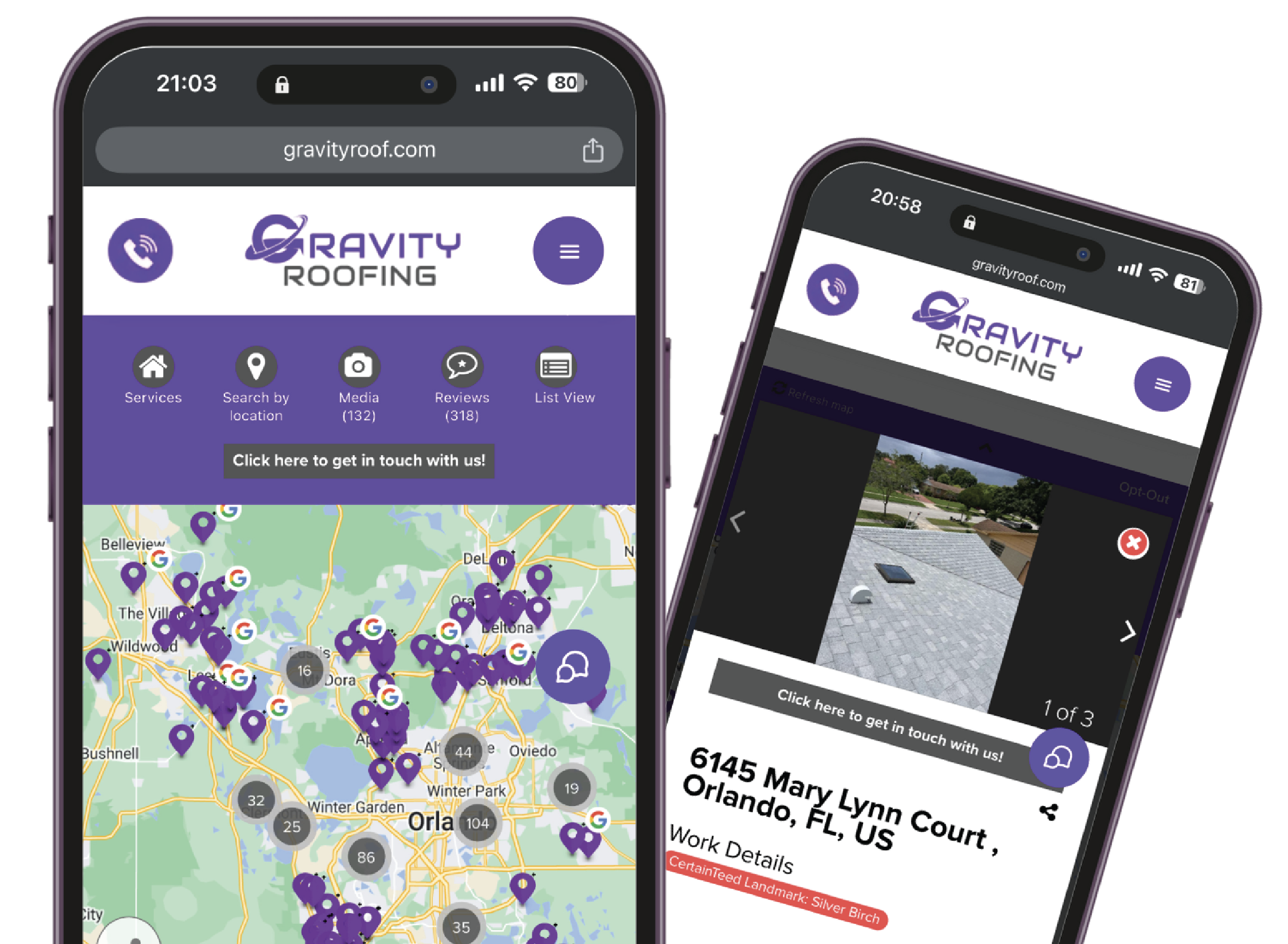How to Inspect Your Roof for Hidden Storm Damage
In Central Florida, storm damage to roofs is a common issue due to frequent severe weather conditions. Regular roof inspections, especially after storms, are crucial to maintaining your home’s integrity and preventing long-term damage. At Gravity Roofing, we emphasize the importance of thorough inspections to identify both visible and hidden damage to ensure your roof remains in optimal condition.
Types of Storm Damage
Recognizing Visible Damage
Missing or Damaged Shingles
Storms can easily dislodge or break shingles, leaving your roof exposed to further damage. Inspect your roof from the ground or use binoculars to identify any gaps where shingles are missing.
Leaks and Water Damage
Inspect for water stains on your ceiling or walls, indicating potential leaks. These can lead to mold and structural damage if not addressed promptly.
Debris on Roof
Branches, leaves, and other debris can accumulate on your roof, potentially causing physical damage and blocking drainage systems.
Identifying Invisible Damage
Shingle Bruises
Even if shingles appear intact, they might have bruises from hail or heavy debris. These bruises can lead to granule loss and weaken the shingles’ protective capabilities.
Nicks and Dents in Soft Metal
Check for dents on soft metal components like vents and flashing. These small damages can worsen over time, leading to leaks and other issues.
Granules in Gutters
Asphalt shingles shed granules when damaged. Check your gutters for an accumulation of granules, indicating that your shingles are wearing down.
Soft Spots on the Roof
Carefully walk on your roof to check for any soft spots, which can indicate water damage beneath the shingles.
Peeling or Bubbling Paint
Excess moisture from a roof leak can cause paint to peel or bubble on your home’s exterior or interior walls.
Inspection Steps
Ensuring Safety First
Before starting your inspection, ensure you have the necessary safety equipment. Wear non-slip shoes, use a stable ladder, and consider having someone assist you.
Conducting a Visual Inspection
Shingles and Tiles
Look for any missing, broken, or bruised shingles. Pay attention to color changes or exposed underlayment, which indicate damage.
Gutters and Downspouts
Clear any debris and check for proper drainage. Ensure gutters and downspouts are securely attached and not damaged.
Flashing and Seals
Inspect the flashing around chimneys, skylights, and other roof penetrations. Look for signs of rust, loose fittings, or sealant issues.
Checking Attics and Ceilings
Signs of Leaks
Inside your attic, look for water stains, mold, or wet insulation, all of which indicate potential roof leaks.
Light Penetration
If you see daylight coming through the roof boards, this is a clear sign of damage that needs immediate attention.
Professional Inspection
When to Call a Professional
If your inspection reveals significant damage or if you’re unsure about your findings, it’s best to call a professional. Gravity Roofing offers comprehensive roof inspections to accurately assess the condition of your roof.
Benefits of Professional Inspections
Professional inspectors have the expertise and tools to identify both visible and hidden damages. They can provide detailed reports and recommendations for necessary repairs, ensuring your roof is thoroughly assessed.
Immediate Actions
Making Temporary Fixes
Using Tarps and Plastic Covers
For immediate protection, cover damaged areas with tarps or plastic sheeting to prevent further water intrusion.
Placing Buckets Under Leaks
Inside your home, place buckets under active leaks to catch water and minimize damage to your floors and furniture.
Contacting Your Insurance Company
After a storm, promptly contact your insurance company to report the damage. Provide them with photos and documentation from your inspection to support your claim.
Repair and Restoration
Hiring a Roofing Contractor
For permanent repairs, hire a reputable roofing contractor like Gravity Roofing. Professional repairs ensure the job is done correctly and safely.
Steps for Permanent Repairs
Your contractor will remove damaged materials, replace them with new ones, and ensure all components of your roof are secure and sealed.
Preventing Future Damage
Trim Overhanging Branches
Trees near your home can cause significant damage during a storm. Regularly trim branches that hang over your roof to minimize the risk.
Maintain Gutters and Downspouts
Ensure your gutters and downspouts are clean and in good condition. Proper drainage prevents water from pooling on your roof and causing damage.
Install Impact-Resistant Shingles
If you live in an area prone to severe weather, consider installing impact-resistant shingles. These shingles are designed to withstand hail and high winds, providing better protection for your home.
Conclusion
Regular roof inspections, especially after storms, are crucial to maintaining your home’s safety and integrity. By identifying and addressing both visible and hidden damages, you can prevent costly repairs and extend the lifespan of your roof. Trust Gravity Roofing in Central Florida for professional inspections and repairs to keep your home protected year-round. Regular inspections, both DIY and professional, combined with preventive measures, can help you catch and address issues early. By staying vigilant, you can ensure your roof remains in top condition and withstands the elements for years to come.














